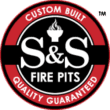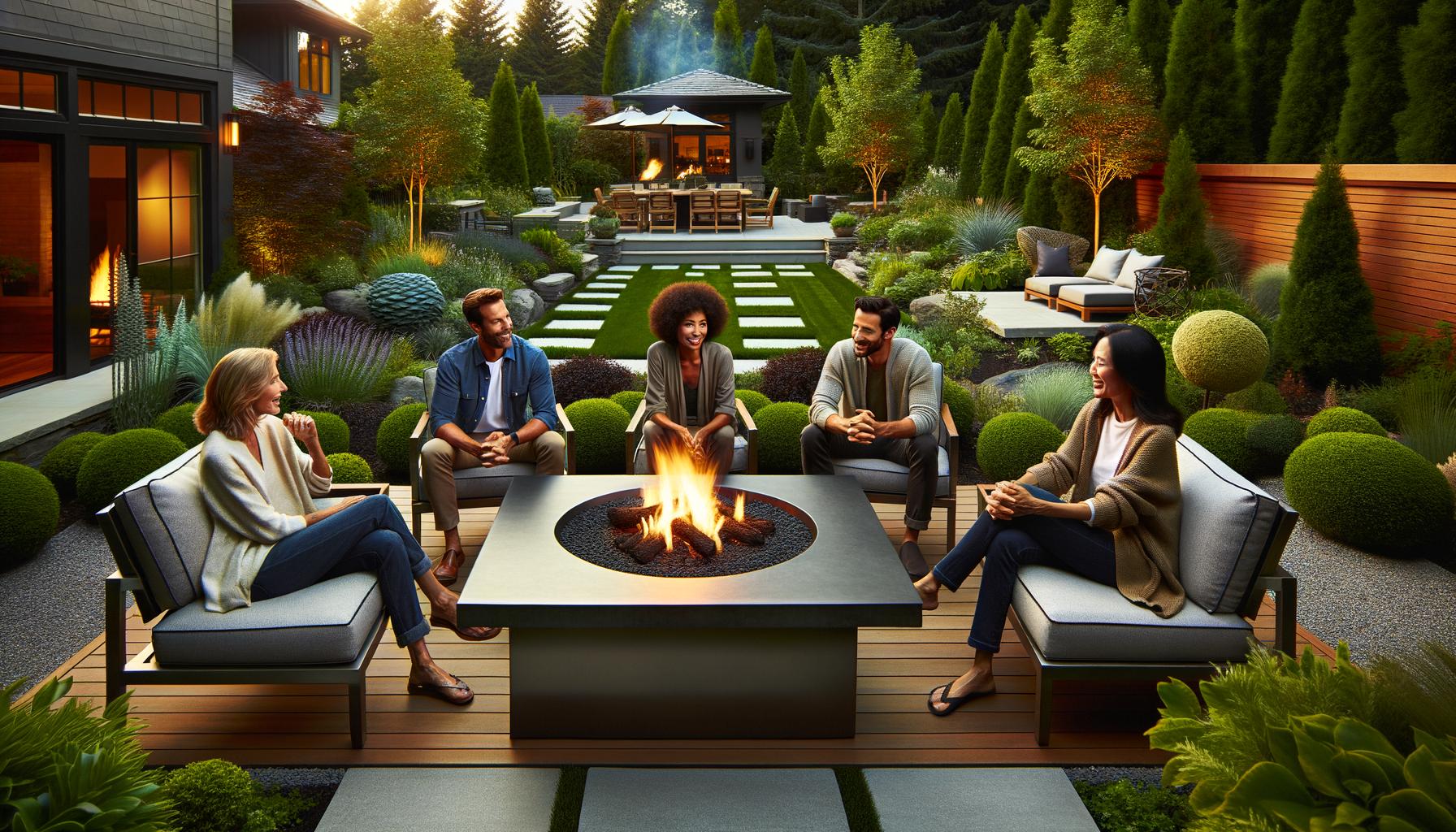
Choosing the right material for your outdoor fire pit can make a significant difference in durability, maintenance, and overall enjoyment.
From steel and cast iron to copper, each material offers unique benefits and challenges.
At S&S Fire Pits, we pride ourselves on providing expert insights to help you make an informed decision.
Exploring best practices for maintenance and selection can help you maximize the life and beauty of your fire pit.
What Are the Best Fire Pit Materials?
Selecting the best material for your outdoor fire pit is more than just aesthetics; it impacts the pit’s durability, maintenance needs, and even the quality of the fire experience.
Steel Fire Pits: Durability and Strength
Steel is a top choice for its outstanding strength and resilience. Common varieties include carbon steel, stainless steel, and COR-TEN steel. Carbon steel fire pits, known for their robust build, are low-maintenance and long-lasting. Stainless steel options stand out for their rust resistance, extending their service life significantly. Unlike other metals, COR-TEN steel develops a protective patina over time, enhancing its resistance to weathering. This natural oxidation also creates a visually appealing rust-like texture. For instance, stainless steel fire pits, with proper upkeep, can last several years, making them a worthwhile investment for your outdoor space.
Cast Iron Fire Pits: Heat Retention and Longevity
Cast iron excels in heat retention, providing consistent warmth long after the fire has died down. This material’s exceptional longevity requires less frequent replacement compared to other metals. While cast iron fire pits may need periodic maintenance to prevent rust, the trade-off is an enduring and highly effective heating solution. According to market research, wood-burning fire pits, which often include cast iron models, held a dominant 48.8% market share in 2022, reflecting their popularity and utility.
Copper Fire Pits: Aesthetic Appeal and Patina Development
Copper fire pits offer a distinct aesthetic appeal with their vibrant, metallic finish. Over time, copper naturally develops a patina, giving it a unique, aged look that many homeowners find attractive. This patina also provides a layer of protection against corrosion. Despite their visual charm, copper fire pits are not as durable as steel or cast iron, often requiring more upkeep to maintain their beauty and function. Residential preferences for outdoor ambiance have driven an increase in the use of decorative materials like copper in fire pit design, reflecting a consumer desire for both style and functionality.
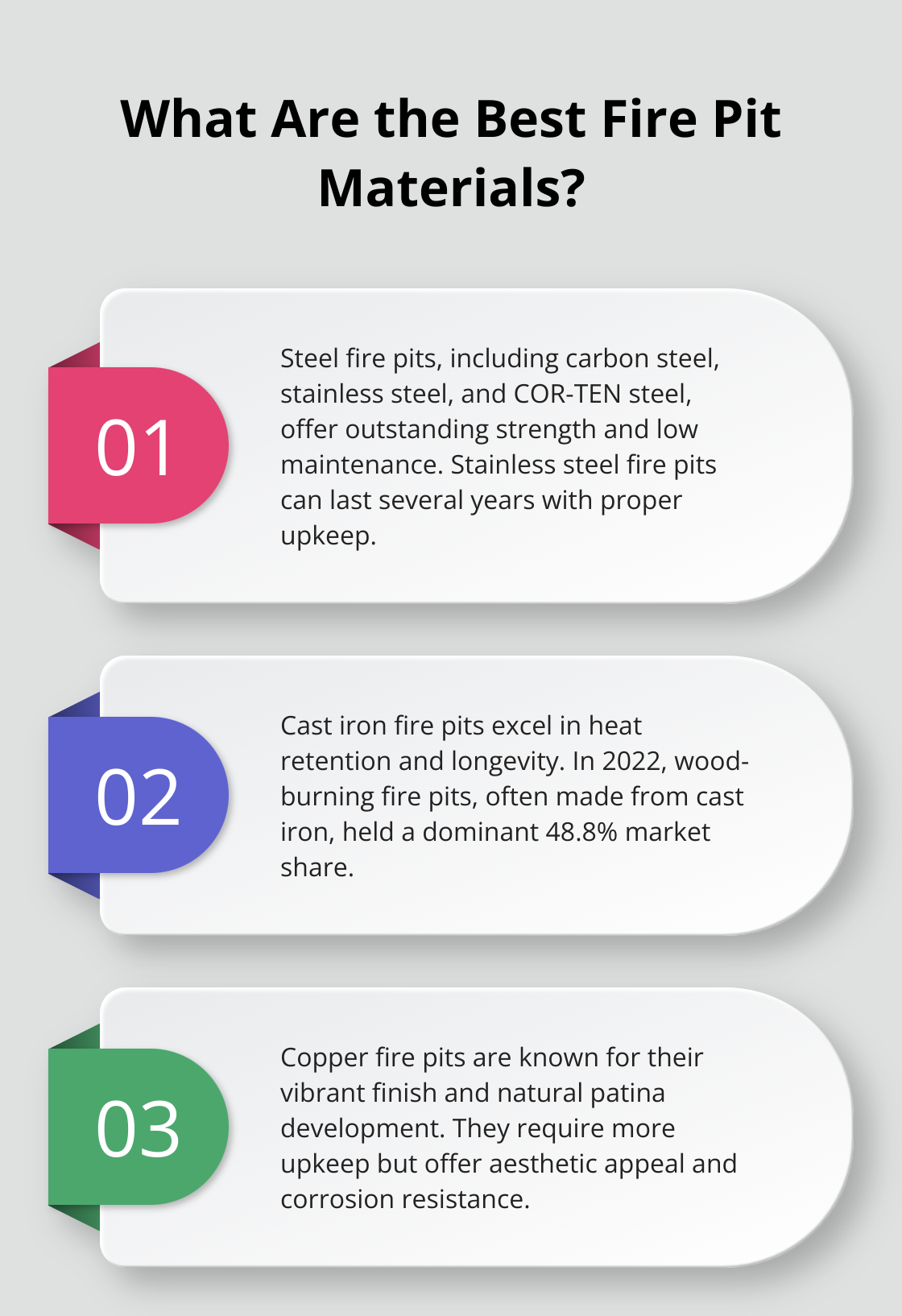
Selecting the right material tailored to your needs ensures that your fire pit becomes a cherished feature in your backyard for years to come.
How to Maintain Different Fire Pit Materials
Proper maintenance can extend the life of your fire pit significantly, ensuring it remains a centerpiece in your outdoor space. Each material—steel, cast iron, and copper—requires specific care to maintain its appearance and functionality.
Cleaning and Rust Prevention for Steel
Steel fire pits, including carbon steel and stainless steel, need regular cleaning to prevent rust and maintain their appearance. For carbon steel, use a wire brush or steel wool to remove any rust spots. Applying a high-temperature paint or rust inhibitor can add an extra layer of protection, especially in humid environments. Stainless steel, while more resistant to rust, benefits from periodic cleaning with a mild detergent and water. Ensure it’s thoroughly dried to prevent any moisture-related damage. Steel fire pits, including COR-TEN steel, should be covered when not in use to protect them from the elements.
Seasoning Cast Iron to Prevent Corrosion
Cast iron fire pits are loved for their exceptional heat retention, but they can be prone to rust if not properly maintained. Season the cast iron by coating it with vegetable oil and heating it to create a protective layer. This process should be repeated periodically, especially after extensive use. Cleaning should be done with a stiff brush, avoiding soap, which can strip away the seasoning. After each cleaning, ensure the fire pit is dried completely to prevent moisture from causing rust. Additionally, storing the cast iron fire pit in a dry place when not in use can significantly prolong its life.
Polishing and Protecting Copper Surfaces
Copper fire pits are highly valued for their aesthetic appeal, and maintaining that shine requires specific care. Regular polishing with a copper cleaner or a homemade solution of vinegar, salt, and flour can keep the surface looking new. As copper naturally develops a patina, you may choose to maintain this protective layer by simply rinsing the fire pit with water and allowing it to air dry. However, if you prefer the shiny look, regular polishing is necessary. Use a copper sealer to provide an additional protective layer against the elements. Covering the copper fire pit when not in use will also help in preserving its beauty and preventing unnecessary weathering.
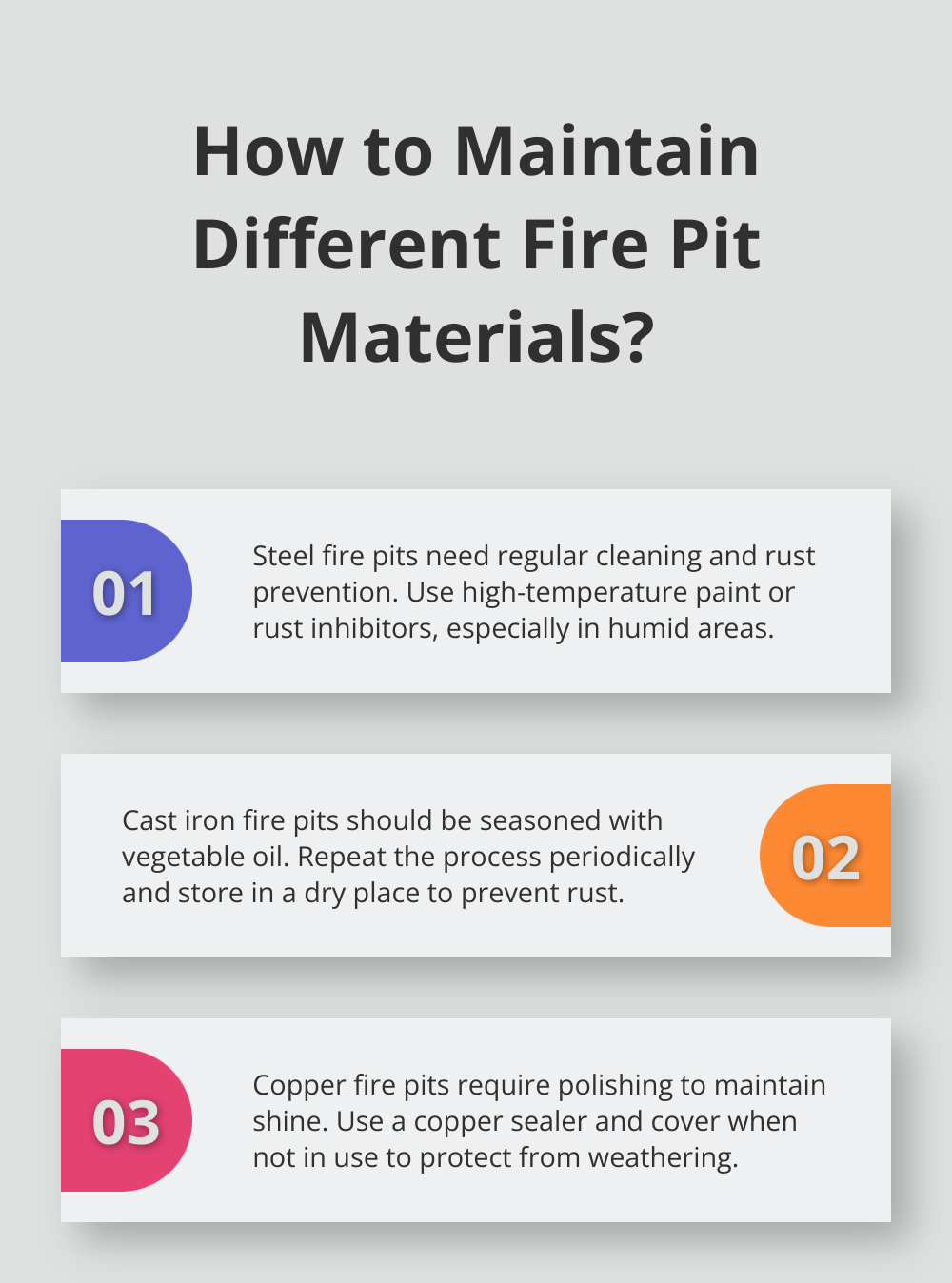
Taking care of your fire pit not only enhances its longevity but also ensures it remains a functional and attractive feature in your outdoor living space.
How to Choose the Right Fire Pit Material
Choosing the right fire pit material involves considering various factors that impact its performance, longevity, and overall aesthetics. Practical aspects such as climate, budget, and design preferences are key to making an informed decision.
Climate Compatibility and Material Performance
The local climate can significantly affect the durability and maintenance requirements of your fire pit. For instance, stainless steel is ideal for humid or coastal areas due to its superior rust resistance. In contrast, carbon steel, while durable, may require additional protective coatings to withstand moisture-related damage effectively. COR-TEN steel offers a solution for those seeking a material that weathers well, developing a rustlike patina that protects against further corrosion.
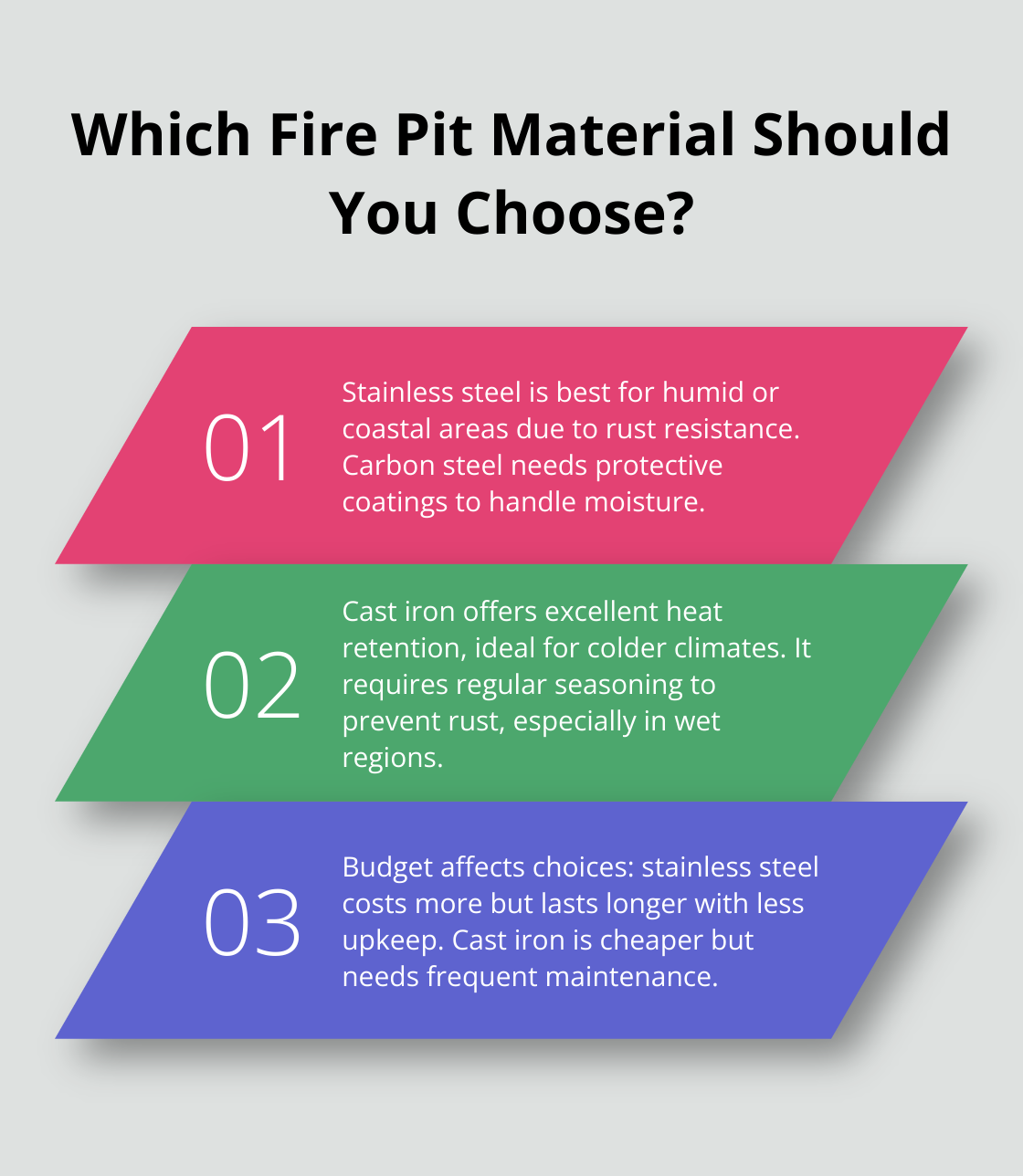
For colder climates, cast iron fire pits are highly recommended for their excellent heat retention. They provide consistent warmth that can elevate outdoor gatherings even during chilly nights. However, regular seasoning to prevent rust is essential, particularly in regions with high precipitation.
Budget and Longevity
Budget constraints often play a crucial role in the selection process. While stainless steel fire pits tend to have a higher upfront cost, their extended lifespan and minimal maintenance often justify the investment. On the other hand, cast iron fire pits, which are relatively more affordable, may require more frequent maintenance but offer incredible longevity and heat retention.
Copper fire pits, although visually appealing, are at a higher price point and require considerable upkeep to maintain their beauty. However, they can provide a unique aesthetic that is hard to match. The choice between initial cost and ongoing maintenance is critical in determining the right fire pit for your needs.
Aesthetics and Design Preferences
The material of your fire pit also impacts its visual appeal, which can transform your outdoor space. Copper fire pits are favored for their vibrant finish and developing patina, which offers an antique charm. Steel fire pits, especially those made from COR-TEN steel, provide a sleek, industrial look that can blend well with modern outdoor designs. Cast iron fire pits lend a rustic, classic appearance suitable for traditional settings.
When selecting a fire pit, it’s essential to balance aesthetics with functionality. Ensure the design complements your overall outdoor decor while also meeting practical needs. For additional guidance on enhancing your fire pit area, consider reading this post on fire pit accessories to elevate both style and functionality.
Choosing the right material tailored to your needs can ensure your fire pit becomes a cherished feature in your backyard, offering warmth and aesthetic appeal for years to come.
Conclusion
Selecting the right material for your outdoor fire pit means balancing durability, maintenance, aesthetics, and budget. Steel options, such as carbon steel, stainless steel, and COR-TEN steel, offer robust builds with varying levels of rust resistance and maintenance needs. Cast iron fire pits provide exceptional heat retention and longevity, though they require regular seasoning to prevent rust. Copper fire pits stand out for their aesthetic appeal and natural patina, but demand more upkeep to maintain their beauty.
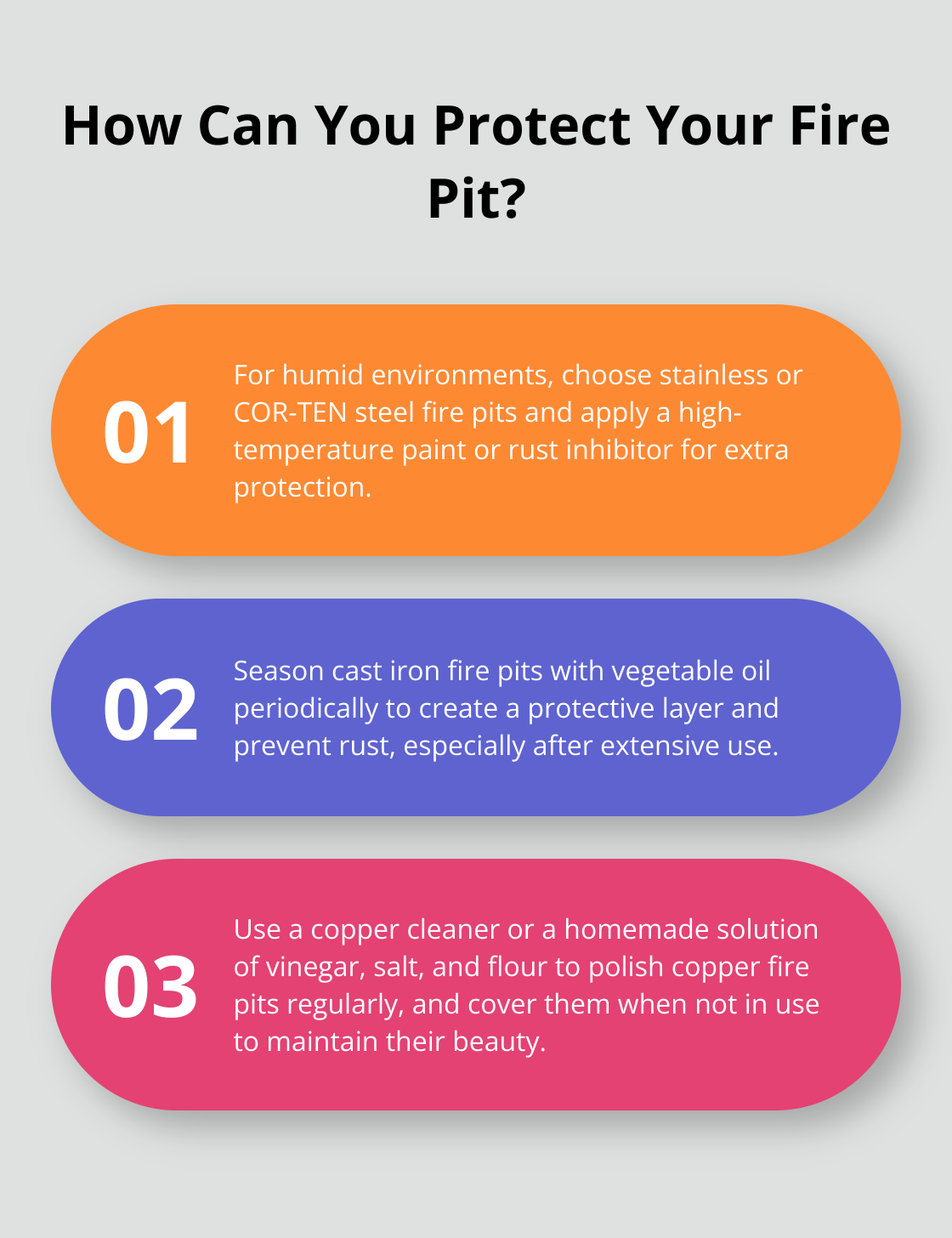
Maintenance plays a crucial role in the lifespan and functionality of your fire pit. Regular cleaning, protective coatings, and proper storage can significantly extend the life of your fire pit, ensuring it remains a prized feature in your outdoor space. Each material requires specific care routines, whether it’s preventing rust on steel and cast iron or polishing copper to maintain its shine.
Choosing the best material involves considering your local climate, budget constraints, and design preferences. While initial costs and maintenance needs vary, selecting a material that aligns with your requirements and environment ensures lasting enjoyment and functionality.
We at S&S Fire Pits are committed to providing high-quality, handmade fire pits crafted from solid USA steel. Our products are designed for longevity and to stand out in any backyard setting. Explore our range of unique fire pits and accessories to enhance your outdoor living space at S&S Fire Pits.
For more tips on maintaining and choosing the perfect fire pit, check out this guide on fire pit maintenance.
